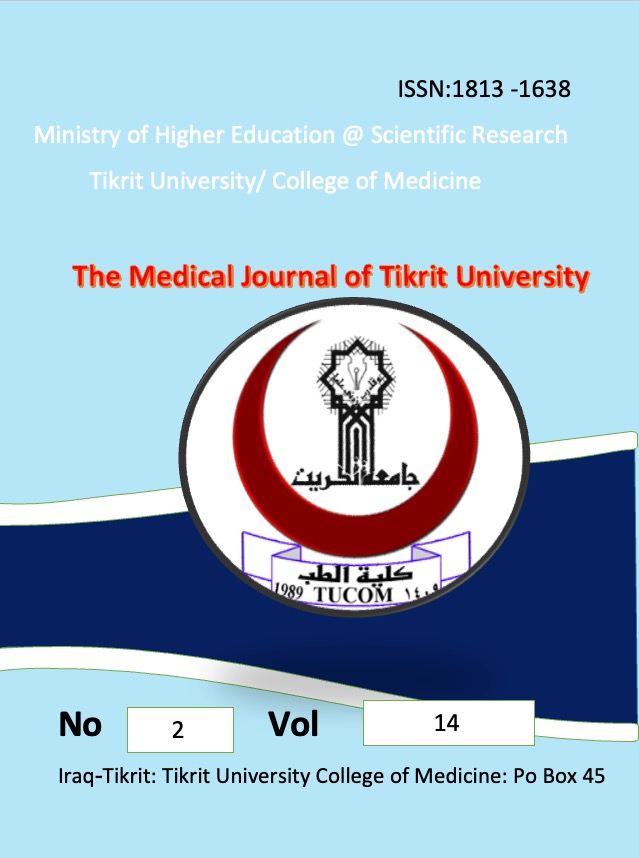Prevalence of Giardia lamblia in different localities of Erbil province/ northern Iraq
Abstract
his Study included examination of 2952 stool samples, collected randomly from both sexes and different social classes for the presence of Giardia lamblia. Each sample was examined by both direct stool examination and zinc sulphate flotation technique, but no significant difference has been noticed between these two methods. It was found that 326 persons have been infected with G. lamblia (11.04%) and statistically significant differences have been noticed among different social classes. High percentage of infection was noticed among pre-school children (26.82%) and house wives (26.57%). The highest percentage of infection was found between the
age group (below one year —10 years) followed by the persons whose ages were 51 and above. No significant difference has been found between infected males and females. There were significant differences in the prevalence of infection among the three school ages (primary, secondary and university students). The highest rate of infection was found among the primary school children. Considering seasonal variation, the highest rate of infection was in summer (25.68%) and the lowest was in winter (5.56%). On estimation of the blood group of infected persons. The highest prevalence was noticed among persons with blood group (A) (44.3%) followed by group (O) (21.59%) then (B) (20.45%) and lowest was among (AB) (13.63%).





